Root over Rock
Rock plantings take two quite different forms:
1. The first are those where the roots are planted in hollows filled with soil on the rock. The trees may be immature or refined trained trees with the root systems being contained in the holes in which they are planted. These trees can be carefully repotted and root trimmed every few years. They do not become attached to the rocks.

2. The second are root over rock plantings, where the roots are allowed to extend and clasp onto the rock itself, almost becoming part of it and with the roots remaining visible. Repotting is not possible once the roots have become established, just those within the tray or pot being trimmed and the soil refreshed.
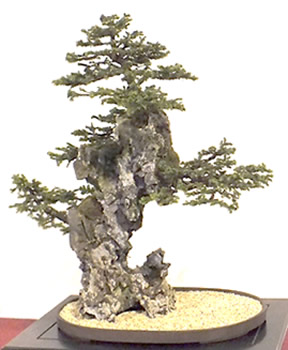
The only exception to this rule is when a porous rock such as tufa (carboniferous limestone) is used. Tufa is a sedimentary rock laid as sea creature skeletons and shells down on sea beds millions of years ago. This rock was forced upwards by earth movements and volcanic activity and subjected to great pressure and heat. Parts remain soft and some parts hardened and metamorphosed. Roots can grow into this soft rock but will eventually crack it apart – thus the planting in bonsai terms is relatively short termed.

These styles are designed to depict trees in nature that have grown in a rugged or mountainous area and had to stretch roots over rock or find small cracks or hollows in rough terrain in order to find sufficient nutrients.
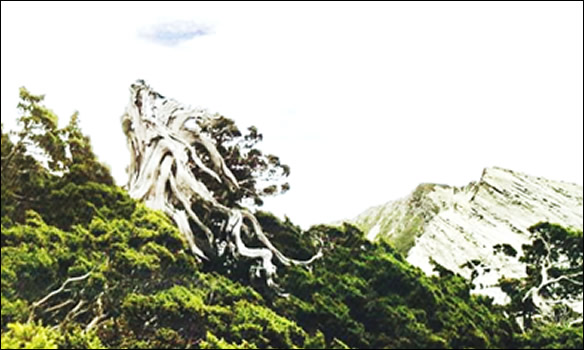

The most important task of the root over rock is to ensure that the roots grip the rock securely; the stone is the tree's only source of stability. Very little soil is used and so it becomes a difficult challenge to ensure the tree has adequate support.
Before you start you will need:
- Find a suitable rock you can purchase one at a nursery or quarry if you cannot find one unused in the garden. Make sure that it is the right size for your finished product and has plenty of natural hollows and crevices. You can use a chisel to make extra depressions if necessary. Unlike a bonsai pot, the rock will become a permanent feature, so choose well.
- A tree: It is best to choose a plant that can be grown in this style and will suit both your choice of rock and artistic vision. Your tree must have a long, extensive root system that can be easily draped and wrapped around the rock. If the tree does not have long enough roots a year or so must be used to develop them.


- Clean your chosen rock so it is free of dirt and debris.
- Gently brush away as much soil as possible from the root. Place the tree as closer to the rock as possible. This is a very delicate procedure, so take care not to cause any damage or injury.
- Carefully untangle the roots.
- Place your plant over the rock and carefully experiment with various positions until you find the one you like the best. Remember to place roots in hallows, crevices and cracks as they would appear in nature, and keep in mind that they should also follow the natural water path. Try not to place all the roots in one place because you will want your bonsai to be viewed from all directions.
- Attach the roots to the rock using raffia or bonsai wire before covering with grafting tape. Wrap the grafting tape gently around the rock, making sure to cover the roots entirely except for the bottom where they will grow into the soil. Inspect to make sure that there are no gaps where the roots can escape or get through the tape.
- Pot into container large enough for your chosen rock. Fill all holes and cracks with bonsai soil and make sure to cover all the roots completely. No parts of the rock or root system should be exposed.
- Water the tree well and leave it in its training pot for at least one year.
- Then using a sharp pair of scissors cut away the grafting tape, making sure not to cut through any roots.
- Repot your root over rock bonsai in a suitable container and fill with new potting soil.
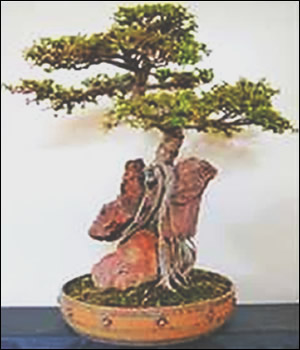
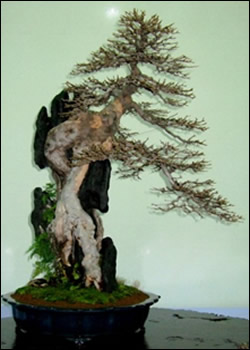
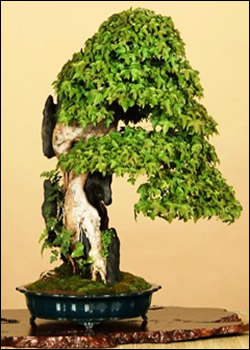
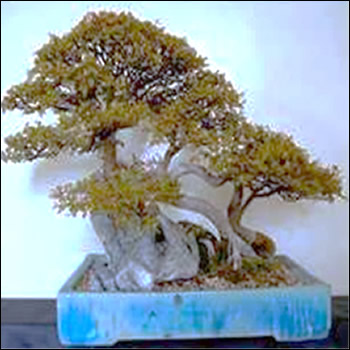
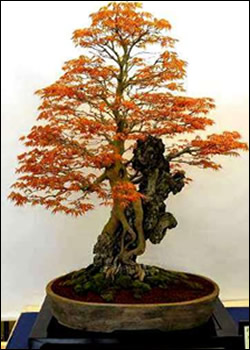

Web design: nysys
